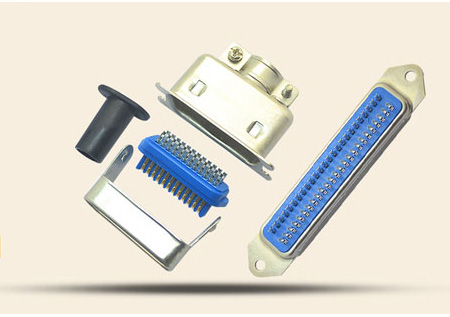
Xian HeGuangdong Xianhe Technology Group Co., Ltd
-
Hot search:SEMI package cleaning machine

Xian HeGuangdong Xianhe Technology Group Co., Ltd
With the transformation of the global energy structure and the improvement of environmental awareness, the photovoltaic new energy industry, as an important form of clean and renewable energy, has ushered in unprecedented development opportunities. Especially driven by the "carbon neutrality" goal, the photovoltaic industry has not only received great attention and strong support from governments of various countries, but has also made significant progress in technological innovation and market expansion. This rapid development trend puts forward higher technical requirements for the design of key component connectors in photovoltaic new energy equipment.
The photovoltaic new energy industry uses the photovoltaic effect to convert solar energy into electrical energy, covering photovoltaic cells, photovoltaic modules, photovoltaic power generation systems and related technology research and development, equipment manufacturing, installation, operation and maintenance and other fields.
In recent years, with the continuous advancement of technology and continuous policy support, the photovoltaic new energy equipment industry has shown explosive growth. As an important component of photovoltaic new energy equipment, connectors need to have stronger technical design requirements. As one of the world's largest photovoltaic markets, China's cumulative solar power generation continues to rise, reaching 293.97 billion kilowatt hours in 2023, an increase of 17.2% over the previous year. This significant growth not only reflects the activity of China's photovoltaic industry, but also indicates broad development prospects in the future.

As the current transmission connection device of the solar photovoltaic system, the photovoltaic connector's conductive performance is directly related to the power generation efficiency and safety of the photovoltaic system. As the capacity of photovoltaic modules increases and the string current gradually increases, the conductive performance of connectors needs to meet higher requirements. Specifically, the contact resistance of the connector must not be greater than 0.35 milliohms to ensure that energy loss during current transmission is minimized.
Photovoltaic equipment is often exposed to harsh environmental conditions, such as high temperature, moisture, corrosion, etc., so photovoltaic connectors must have sufficient safety performance. This includes properties such as waterproofing, high temperature resistance, corrosion resistance and high insulation, and the protection level should reach the IP68 standard. At the same time, the connector structure must be strong and reliable, and the connection force should not be less than 80N to ensure stable operation under various extreme conditions and prevent system efficiency decline or safety accidents caused by poor contact.
With the promotion and application of smart photovoltaic technology, photovoltaic connectors also need to develop in an intelligent direction. As a key device in photovoltaic power generation systems, smart photovoltaic inverters place more requirements on the performance of photovoltaic connectors, such as power conversion, remote control, data collection, online analysis, and environmental adaptation. The connector needs to meet the multi-scenario application requirements of smart photovoltaic inverters and be optimized in terms of electrical performance, resistance performance, power loss, and temperature bearing and heat dissipation capabilities.
The latest notice on smart photovoltaic pilot demonstration activities puts forward requirements for emergency automatic power-off functions for photovoltaic systems installed on buildings. This means that the design of photovoltaic connectors needs to integrate an emergency automatic power-off mechanism to ensure that the power supply can be quickly cut off in an emergency and to prevent safety accidents such as fires. This feature requires a high degree of connector integration and reliability to ensure rapid response at critical moments.
Photovoltaic connectors need to withstand long-term wind, sun, and harsh weather conditions during use, so they must have good durability. At the same time, in order to reduce maintenance costs and improve maintenance efficiency, the connector should be designed to facilitate inspection and maintenance. For example, MC4/H4 connectors with easy plugging and good sealing have become the mainstream choice in the market.
In the future, with the continued development of the photovoltaic new energy equipment industry, connector design will pay more attention to efficiency, safety, intelligence and durability. On the one hand, with the continuous advancement of photovoltaic module and inverter technology, connectors need to be continuously upgraded to meet new performance requirements; on the other hand, the continuous expansion of photovoltaic application scenarios and the integration of photovoltaic and other energy technologies will also provide opportunities for connections. Device design brings more challenges and opportunities.
Photovoltaic connector companies need to accurately seize market opportunities, increase investment in research and development, and launch new connector products to meet market demand. At the same time, product quality and performance levels are continuously improved through technological innovation and process improvement to stand out in the fierce market competition and occupy a larger market share.
In short, the rapid development of the photovoltaic new energy equipment industry has put forward higher technical requirements for connector design. Connector companies need to keep up with industry development trends and the pace of technological innovation to continuously improve their competitiveness to cope with future market challenges and opportunities.


SweepWechat

SweepPersonal wechat